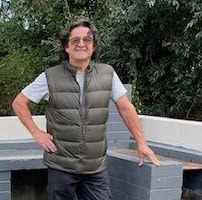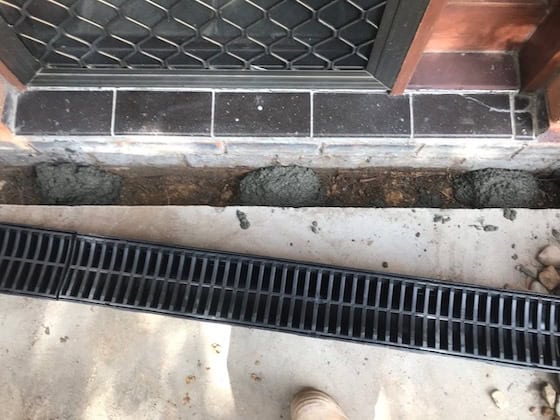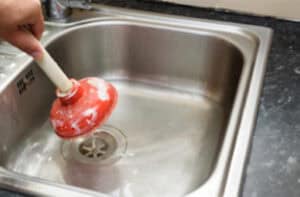Trench Drain
What’s the purpose? Manage surface water runoff.
What is the structure: A trench drain is essentially a long, narrow trench with a grate on top.
How does a trench drain work?
A trench drain is like a shallow ditch with a grate over it which is designed to capture and divert surface water. You can often see these in places like driveways or paved areas where water needs a clear path to drain away.
The grated top allows water to flow into the trench, which then carries it away through a connected drainage system, stopping areas from becoming waterlogged.
Channel Drain
What’s the purpose? Similar to a trench drain, it handles surface water but generally in more heavy duty situations.
What’s the structure? It consists of a (U-shaped) channel with a removable grate on top, typically made from concrete, metal, or plastic.
How does a channel drain work?
More robust than a trench drain. A channel drain is a U-shaped channel with a removable grate.
Ideal for heavy-duty applications like industrial sites or large parking lots and problem areas around a home. It captures and directs significant amounts of surface water into the drainage system, preventing flooding and water damage.
French Drain
What’s the purpose? To redirect surface and groundwater away from a specific area. For example, a basement this is prone to flooding.
What’s the structure: A perforated pipe surrounded by gravel or rock, and buried underground.
How does a french drain work?
This is a system that will be less visible around your property. It’s a solution usually used to tackle excess water in your yard or prevent water from seeping into your basement.
Imagine a trench filled with gravel, or rock, with a perforated pipe at the bottom. This setup is buried underground. When water seeps into the trench, it flows through the gravel and enters the perforated pipe, which then directs the water away from your home or other areas you want to keep dry.
Drain Materials
Trench and channel drain systems range from heavy-duty options like fibreglass-reinforced concrete to lightweight, UV-stabilized plastic, and even stainless steel. And available in several sizes and prices.
Choosing the best option largely depends on your specific requirements for durability, aesthetics, and budget. Stainless steel is ideal for high-end, high-performance needs while UV-stabilized plastic is perfect for versatile, cost-effective solutions.
Recommended uses
For commercial areas, the fibre-reinforced concrete systems are ideal for heavy-duty traffic such as garages, factories, or parking areas.
At home, the UV-stabilized plastic range is a better choice due to its durability and ease of installation.
For pool areas, bathrooms, and showers, the stainless steel option is perfect for these more ‘decorative’ applications.
We compared stainless steel drains with the UV-stabilized plastic
Stainless steel drains:
- Durability and longevity: Stainless steel is very durable and resistant to corrosion, ensuring a longer lifespan even in harsh environments.
- Aesthetic appeal: Stainless steel has a sleek, modern look that can enhance the aesthetic appeal of spaces like bathrooms, pool areas, and decorative outdoor settings.
- Heat and chemical resistance: This material can withstand high temperatures and exposure to various chemicals, making it suitable for industrial and high-traffic areas.
- Easy maintenance: Stainless steel surfaces are smooth and non-porous, which makes them easy to clean and less prone to bacterial buildup.
UV-Stabilized Plastic Drains:
- Cost-effective: UV-stabilized plastic drains are generally more affordable than stainless steel options, making them the economical choice for many homeowners.
- Lightweight and easy to install: Being lighter, plastic drains are easier to handle and install, which can save on labor costs and time.
- Resistant to UV degradation: These drains are designed to withstand prolonged exposure to sunlight without degrading, making them suitable for outdoor applications.
- Flexibility: Plastic drains can offer more flexibility in terms of shape and size options, allowing for easier customization to fit specific needs.
Sometimes both options will do the job but it all comes down to price and what’s going to be easier to work with. I used a heavy-duty plastic channel drain in a project featured on this page. It worked extremely well and was easy to cut where I needed it to fit difficult a space into the brickwork..



